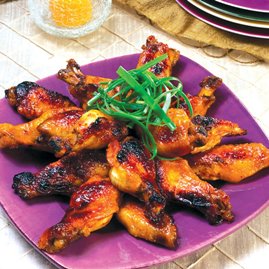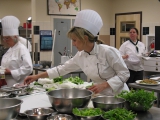Convenience products—a reality in today’s kitchens—are actually platforms from which to create signature dishes.
By Adam Weiner
 For economic reasons, there are very few kitchens in the country that cook almost everything from scratch. Mixes, precooked items, packages and containers can be found in even the best kitchens. The problem with many young cooks is that they just open up the packages and cans, dump them into a pot or hotel pan, heat them, and slop them on a plate. They lose the passion for their craft. They become disillusioned and bitter, hating and then quitting their jobs.
For economic reasons, there are very few kitchens in the country that cook almost everything from scratch. Mixes, precooked items, packages and containers can be found in even the best kitchens. The problem with many young cooks is that they just open up the packages and cans, dump them into a pot or hotel pan, heat them, and slop them on a plate. They lose the passion for their craft. They become disillusioned and bitter, hating and then quitting their jobs.
These young cooks have not been taught that these products are not the “be all” and “end all” of their cooking. No one has taught them that convenience products are a canvas waiting to be painted with their own culinary style.

 For economic reasons, there are very few kitchens in the country that cook almost everything from scratch. Mixes, precooked items, packages and containers can be found in even the best kitchens. The problem with many young cooks is that they just open up the packages and cans, dump them into a pot or hotel pan, heat them, and slop them on a plate. They lose the passion for their craft. They become disillusioned and bitter, hating and then quitting their jobs.
For economic reasons, there are very few kitchens in the country that cook almost everything from scratch. Mixes, precooked items, packages and containers can be found in even the best kitchens. The problem with many young cooks is that they just open up the packages and cans, dump them into a pot or hotel pan, heat them, and slop them on a plate. They lose the passion for their craft. They become disillusioned and bitter, hating and then quitting their jobs.